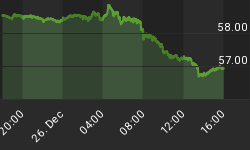Our monthly Monetary Watch, an Austrian take on where we are on the monetary inflation front examining the money creation activities of the Federal Reserve and private banks...
True "Austrian" Money Supply TMS
The U.S. money supply aggregates based on the Austrian definition of the money supply, what Austrians call the True Money Supply or TMS, surged in March, with narrow TMS1 posting an annualized rate of increase of 25.8% and broad TMS2 showing an annualized rate of growth of 22.4%. That brought the annualized three-month rate of growth on TMS1 and TMS2 to 5.3% and 9.8%, respectively.

Turning to our longer-term twelve-month rate of change metrics - more indicative of the underlying trends - and focusing on our preferred TMS2 measure, we find that TMS2 saw another healthy increase in March, growing at an annualized rate of 10.6%. That's up from February's 10.3% and up smartly from the recent low of 9.8% seen back in November 2010. That's also the 27th time in the last 28 months that TMS2 posted a twelve-month rate of growth in the double digits, equating to a cumulative increase of some 33% over those 28 months. To put those numbers into perspective, the run-up to the now infamous housing bubble turn credit implosion turn Great Recession saw a string of 36 months of double digit growth for a cumulative increase of 48%. So yes, in terms of time and size, today's inflationary largesse may be only 78% and 69%, respectively of that which brought on the Great Recession, but this one's still going strong, supported of course by a QE II asset purchase program likely to extend through the end of June.
A Look at TMS2 Internals
As we have often discussed in our Monetary Watch series, we put a lot of effort into analyzing the drivers behind the growth in the money supply, a component view we call TMS2 by Economic Category and Source. And for the third month running, this month's component analysis reveals just how important the Federal Reserve's QE II asset purchase program has been to the continued double digit growth in the money supply.
For first time readers of our Monetary Watch, our component view zeroes in on the who and the how behind the ebb and flow of the money supply, reducing monetary inflation to two basic institutions and three primary venues:
- Federal Reserve, via the issuance of what Austrians call covered money substitutes: the simultaneous issuance of on-demand bank deposit liabilities and bank reserves, created by the Federal Reserve through its purchase of assets, by writing checks on itself and later, when those checks are deposited by the sellers of those assets in their respective banks, completing the issuance by crediting those banks' reserve balances at the Federal Reserve for the full amount of the checks.
- Private banks, via the issuance of uncovered money substitutes: the creation of on-demand bank deposit liabilities by private banks unbacked by any reserve cover, created through their issuance of loans and purchase of securities when they pyramid up those loans, securities purchases and deposit liabilities on top of their reserves.
- The Federal Reserve, via the largely passive issuance of currency: the issuance of Federal Reserve notes, created when the public chooses to redeem their on-demand bank-issued deposit liabilities for currency. In contrast to covered and uncovered money substitutes, the issuance of Federal Reserve notes is by and large neutral with respect to the total money supply, as it simply substitutes one form of money, namely covered and/or uncovered money substitutes for another, namely currency.
The combined total of covered money substitutes plus currency is what economists call the monetary base, and by definition completely under the control of the Federal Reserve. And theissuance of covered money substitutes is more popularly known as quantitative easing or QE.
With those definitions in mind (for a more thorough discussion see True "Austrian" Money Supply Definitions, Sources, Notes and References), one look at the charts below reveals exactly who has been behind the move in the money supply these past three months - the Federal Reserve via the issuance of uncovered money substitutes:
More Charts and Commentary continued at http://blogs.forbes.com/michaelpollaro/2011/04/26/monetary-watch-april-2011-the-austrian-take
















